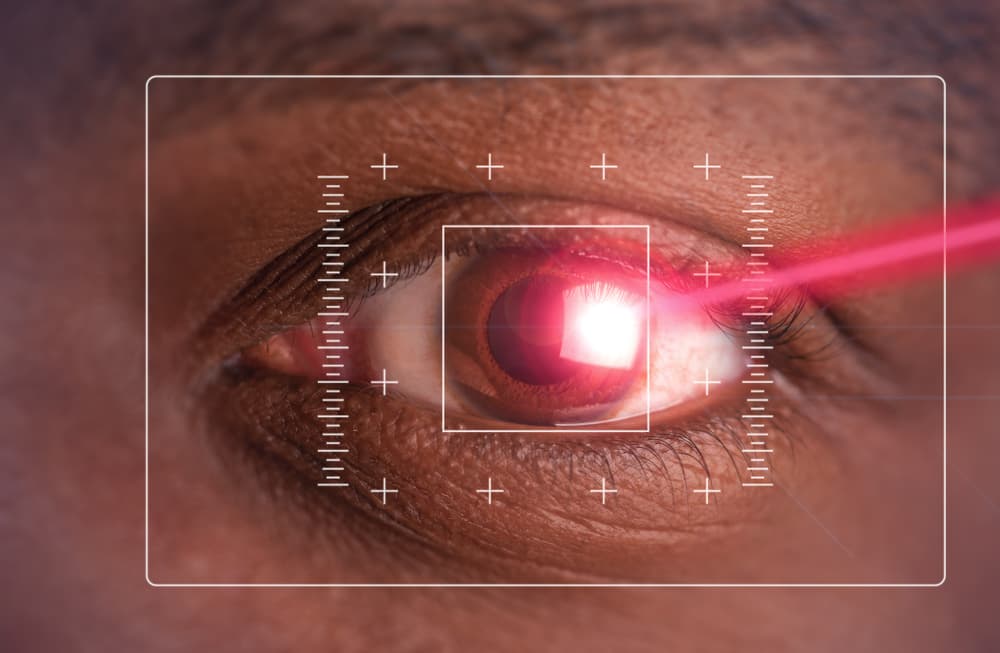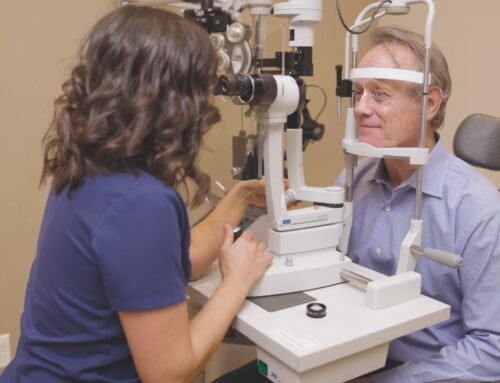If you’re considering LASIK eye surgery, it’s normal to have concerns about the safety of the procedure. LASIK (laser-assisted in situ keratomileusis) is a type of refractive surgery that corrects nearsightedness, farsightedness, and astigmatism.
The procedure involves cutting a tiny incision in the eye’s cornea and using a specialized laser to reshape the cornea to the correct shape. The surgery is quick, painless, and has a high success rate. But, as with any type of surgery, complications might develop.
In this article, we’ll take a closer look at the safety of LASIK eye surgery and what you can expect.
How Safe Is LASIK Surgery for Eyes?

It’s very safe, but LASIK carries some risks, like any surgery. The most common side effects include dry eyes, glare, halos, and double vision. These are minor symptoms that disappear within a few weeks.
Rarely, LASIK might result in more severe side effects such as corneal infections or vision loss. However, these complications are extremely rare, and the benefits of LASIK surgery typically outweigh the risks.
What Does LASIK Eye Surgery Involve?
The average time for LASIK eye surgery is less than 30 minutes, so it’s a fairly easy and quick process. You’ll be given numbing eye drops before the procedure to minimize discomfort. The eye surgeon will then use a microkeratome or a femtosecond laser to cut a flap in the outer layer of your cornea.
After making the flap, the surgeon will use an excimer laser to cut away a small amount of corneal tissue. This laser can quickly eliminate tissue and is incredibly precise. The surgeon then repositions the flap, and the eye instantly begins to heal.
LASIK Side Effects
LASIK eye surgery can cause blurry vision. Usually, these symptoms disappear on their own within a few weeks. They may, however, be more persistent in particular circumstances.
Dry eyes are the most common side effect of LASIK surgery. This happens when the eye does not generate enough tears to maintain lubrication on the eye’s surface. Dry eyes can cause irritation, itching, and a gritty feeling.
Glare and halos are other common side effects of LASIK surgery. The cornea’s scattering of incoming light causes these symptoms, appearing as halos or starbursts around lights at night.
What to Expect

To start the surgery, the patient lies comfortably on a table with one eye taped shut and the other held open with a speculum. The surgeon administers eye drops to numb the eye and places a suction ring on the cornea. Next, a microkeratome or femtosecond laser creates a flap on the cornea. The doctor lifts the flap and then uses an excimer laser to sculpt the underlying tissue.
After surgery, the medical staff advises patients to use preservative-free artificial tears to alleviate dry eyes, a common side effect. They also give the patient antibiotics and steroidal eye drops for up to two weeks.
The Bottom Line: Is LASIK Eye Surgery Worth It?
LASIK eye surgery can be a life-changing experience for many people who want to correct their vision. While there are potential risks and side effects, the benefits of LASIK often outweigh the risks. Not only can LASIK eliminate the need for glasses or contacts, but it can also improve quality of life and boost confidence.
If you’re considering getting the surgery, you must get a complete eye exam with a qualified surgeon to be sure it’s the best option for you. At Eye Care Professionals, we offer the latest and most advanced LASIK technology to provide personalized treatment that meets each patient’s unique visual needs.
Don’t let poor vision hold you back. Schedule a consultation today to find out if LASIK is the right option for you and start enjoying the benefits of clear vision.










